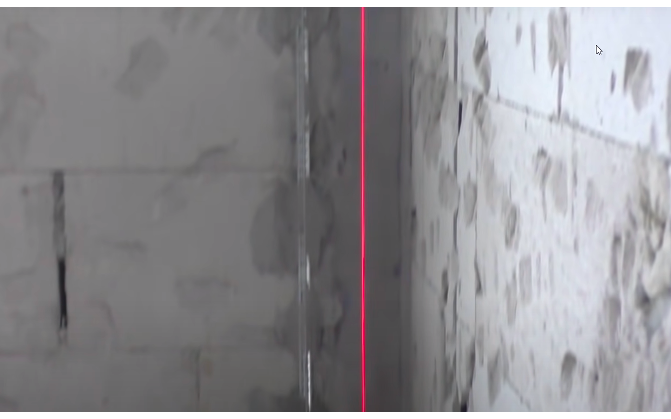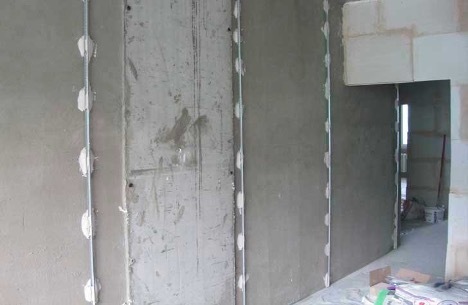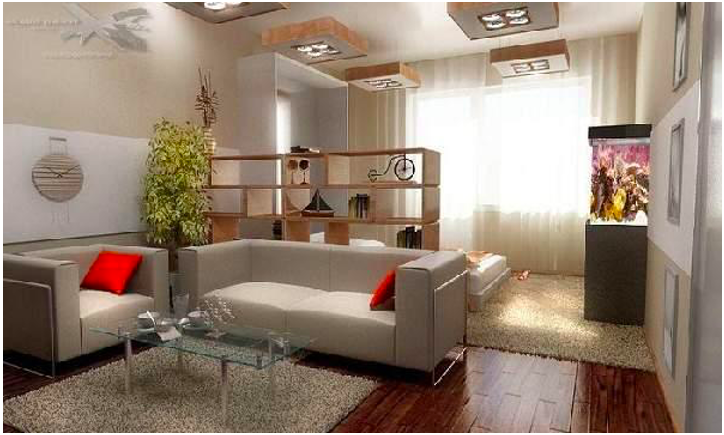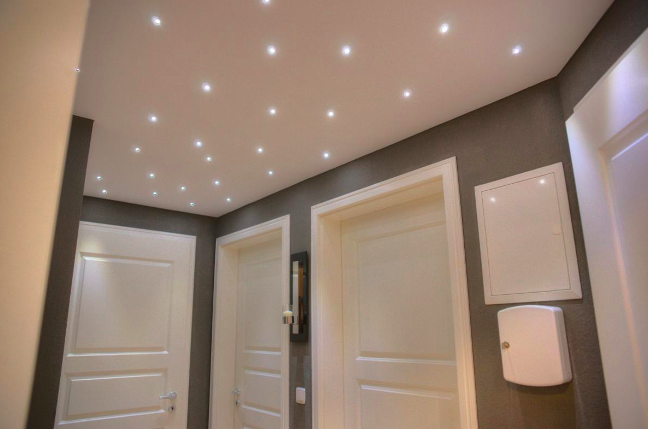Alignment of walls with plaster is performed to eliminate various voids from 2 to 50 mm. The main difficulty lies in the correct installation of beacons, which are mounted on marks obtained using a laser level. Step-by-step instructions and professional advice can be found in the presented article.
The content of the article
- Wall unevenness check
- Materials and tools
- Step-by-step instruction
Wall unevenness check
Before leveling the walls with plaster with your own hands, it is important to assess how uneven the surface is. Normally, fine finishing is carried out with a maximum difference of 2 mm over a length of 2 m or more. But such smooth surfaces are quite rare.
Therefore, before you understand how to level the walls with plaster, it is important to find the bumps and evaluate them. To do this, they act like this:
- They take the rule (length 250 cm) and apply it to the wall, directing it vertically. You need to do this several times until a gap appears. It is measured with a tape measure.
- Understanding how to level walls with plaster, you need to perform similar actions horizontally and diagonally in all directions.
- However, checking the differences on the plane does not allow you to fully understand how to level the wall with plaster with your own hands. To get the full picture, you need to additionally use the building level. It is placed on a rule, which is also applied to the wall in the same way.

- Next, change the position of the upper and lower parts of the rule until the bubble in the level is perfectly centered. Plaster leveling can be started after it is clear where there are gaps and deviations of more than 2 mm.
Materials and tools
For finishing, leveling plaster or ordinary varieties are used. Any composition allows you to eliminate even significant differences up to 50 mm, i.e. 5 cm Plaster is also valuable because it is inexpensive, easily divorced and practically does not take up space after finishing.
Considering different ways of how to properly level the walls with plaster, choose compositions based on cement or gypsum. The former are universal, since they can be used in any room, even with high humidity (bath, kitchen).
The gypsum composition is used only in dry rooms, for example, in the bedroom, living room, nursery. Both types of plaster make it possible to eliminate almost any defects, including significant differences that appear after using beacons. Thanks to this, you can learn how to properly level the walls with plaster.
Moreover, the necessary tools and materials are pre-prepared:
- rule (2-2.5 m);
- construction level;
- drill (you can also use a puncher);
- Laser level;
- cord for marking;
- a set of spatulas;
- mixer for mixing;
- masking tape;
- brush or roller;
- fastener (drill, perforator);
- primer;
- bucket;
- actual plaster.
Step-by-step instruction
Now you need to figure out step by step how to level the plaster. First, they put beacons - the main stages of work are as follows:
- Prepare the surface by removing dust, peeling and contamination. A primer is applied with a roller, picking it up in advance, depending on the type of surface.
- Plastering of uneven walls is necessarily carried out using beacons. A laser level is used to set them accurately. But such a tool is not always in the house, so in extreme cases, you can use the cord.
- The installation points of the beacons are planned so that the interval between them is 20 cm less than the length of the rule. The rail is applied to the wall, starting from the corner, placed parallel to the floor plane and 2 marks are made, stepping back from each edge of the rule by 10 cm.

- Vertical lines are drawn for each mark, determining the correctness by level. Marks are placed on adjacent walls, retreating 5 cm from each corner. At these points put a laser level.
- Having figured out which plaster to level the walls with, you need to put marks above and below the rule, stepping back 4 cm from the edges. Masking tape is used to protect the instrument from scratches.
- Now you need to figure out how to level the plastered walls. To do this, knead a small part of the solution and apply it, moving along the intended vertical lines.
- The beacons are cut to size, applied to the mixture and pressed with a rule until the 4 cm marks coincide with the laser level line.
- Next, you can understand how to plaster an uneven wall. Pre-remove the excess volume of the mixture and fix the guide. Then they check the accuracy using the rule and set all other beacons in the same way.

Now you need to level the plaster, i.e. start the main work. The sequence of actions is as follows:
- Pour clean cold water into the container and add the required amount of the dry mixture according to the instructions.
- Stir with a mixer, first at low, then at high speeds. Regardless of which plaster to choose for leveling the walls, this stage of work will take 5 minutes, after which they are allowed to stand for the same amount of time and stirred again.
- The technology of leveling walls with plaster involves applying the composition with a spatula or a construction ladle. It is constantly smoothed over the surface and the work is controlled by the rule that is applied to the lighthouses. The tool is carried out, moving upwards, and the remains of the mixture are removed.

- When the do-it-yourself plaster of uneven walls sets, the beacons must be removed immediately - then it will be much more difficult to do so. The voids are sealed with the remains of the composition with a spatula.
- At the last stage, you need to go through the putty - then the wall will turn out to be almost perfectly smooth.
Now it’s clear how to level the plaster after drying. In fact, all the work can be done independently, without using special equipment. The main key to success is in the precise installation of beacons. To do this, it is best to use a laser level, which is useful for various types of construction work.


